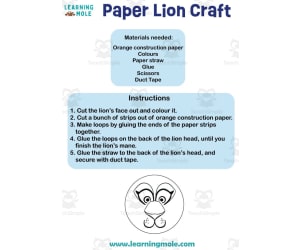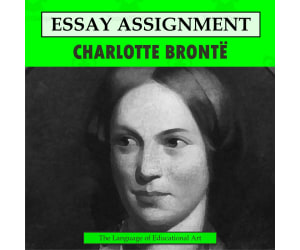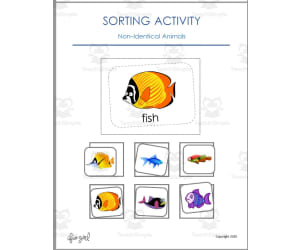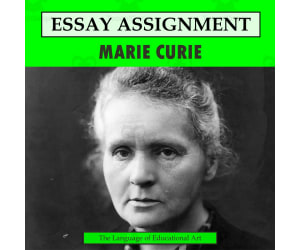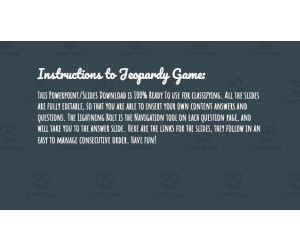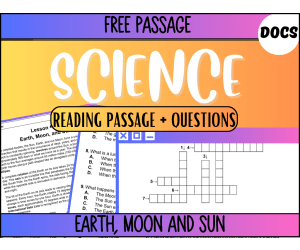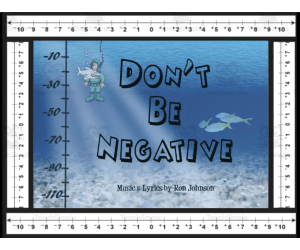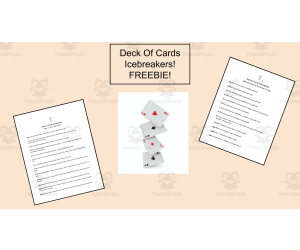6,394 products added recently
Page 55 - Middle School Activities
Keep your middle school students engaged with activities that address their unique interests and developmental needs. These resources offer collaborative projects, critical thinking challenges, and creative expression opportunities. Use them to create a dynamic and inclusive classroom atmosphere.
Common Noun Scavenger Hunt Activity
Grammar, Language Development, ELA, Grade 1, 2, 3, 4, 5, 6, 7, 8, 9, 10, Activities
Activity Introduction An amazing activity designed for the students to learn more about languages. Common Noun Scavenger Hunt Do you enjoy learning English? Which topic do you like the most Grammar, writing, reading, spelling, comprehension, vocabulary or phonics? Have you ever tried to learn any other language? If yes, tell us more about it? How many languages are spoken in the world? What do you think the most interesting one? Can you say Hello in Spanish, French or even Japanese? You can give it a try! Can you name the countries that speaks Portuguese? How many countries speaks Dutch? What is the less spoken language in the whole world? Would you like to learn a new language someday? If yes, which language will you choose? Common Noun Scavenger Hunt Activity The activity is perfect for encouraging the researching skills for the students, while learning more about world languages. Common Noun Scavenger Hunt This friendly designed worksheet is suitable for students at school, homeschooling, and as a group activity. Instructions Can you look for common nouns around you for each of the following categories? Format Available in a PDF format.
Author Educational Voice
Tags Common Noun Scavenger Hunt Activity, Common Noun Scavenger Hunt, Common Noun, Common Noun Activity, Nouns Scavenger Hunt, Nouns Scavenger Hunt Activity, Nouns, Common Nouns
Sustainable Food Activity
Science, Basic Science, Life Sciences, Human Body, Grade 2, 3, 4, 5, 6, 7, 8, 9, Activities
Activity Introduction An amazing activity designed for the students to learn more about famous places in different countries. The Sustainable Foods Do you like STEM subjects? what is your favorite one? Have you ever tried to plant a seed? If yes, tell us more about it. Or have you ever tried to invent something? If yes, tell us more about it. And how do you think it will help us? Have you ever seen a microorganism under a microscope? What was it? And how it looked like? Mathematics is a marvelous subject. Let' sharpen our brains and solve some equations. Do you like timetable tricks? What is your favorite one? Do you know how to code? Have you ever created an app or a game before? If yes, how was it like? Sustainable Foods Activity The activity is perfect for encouraging the researching skills for the students, while learning more about this fantastic place. Sustainable Foods This friendly designed worksheet is suitable for students at school, homeschooling, and as a group activity. Instructions Cut out the foods you think are sustainable, glue them on the plate, then write down why you chose them. Format Available in a PDF format.
Author Educational Voice
Tags Sustainable Food Activity, Sustainable Food, Sustainable Food Facts, Sustainable Food Facts For Kids, Food, Food Facts, Food Facts For Kids
Atomic Trends Practice
Science, Chemistry, Grade 8, 9, 10, 11, 12, Activities
This set of 14 practice problems allows students to practice the atomic trends of the periodic table. Radius, ionization energy, electronegativity, reactivity, etc. are included in this practice. Comparison and ranking of elements using their atomic trend are included in this practice. Additionally, students will justify their answers in some questions. This set can be edited to meet the lessons provided. Korean and Spanish versions available!
Author Schrim's Chem
Tags Anatomic Trends, Ionization Energy, Electronegativity, Reactivity, Practice
Writing Equations for Proportional Relationships PARTNER PRACTICE
Math, Algebra, Grade 7, Activities
Writing Equations for Proportional Relationships PARTNER PRACTICE: A 7th-Grade Teaching Resource This resource is primarily designed to meet the criteria of the 7th Grade Ratios & Proportional Relationship Standards, with a particular focus on representing proportional relationships by equations. The content fits excellently within algebra modules, providing an extra source of instructional material or practice. It ensures students understand how these concepts apply in real-world situations by explaining how ratios and proportions are represented through equations - exemplified as t = pn where: t represents total cost, n represents items. The structure consists of two parts – Form A and Form B. Each form offers a different set of questions but their answers remain consistent across both formats. This approach encourages diverse thinking approaches while ensuring uniform evaluation since all students answer fundamentally identical problems. Versatile Learning with Varied Data Sources Writing Equations for Proportional Relationships PARTNER PRACTICE includes 24 questions which require students to write equations derived from varied data sources such as: Graphs, Tables, or Word-based problems. Possible Uses in Classroom: Whole group instructions: tackling problem-solving approaches collectively; Small group activities :s strong"> illudingAn Answer Key} " ractice sessions. Conveniently, these files are delivered in universally accessible PDF format. The Writing Equations for Proportional Relationships PARTNER PRACTICE equips educators with a solution blending theoretical knowledge application with real-world context relevance in an excitingly interactive format.
Author The Math Cafe
Tags Proportional Relationships, Equations, Real-world Context, Practice, Math
Early Sorting/Grouping activity - Identical and Non-identical items
Special Resources, ELA, Special Education Needs (SEN), Speech Therapy, Math, Early Math, Strategies, Language Development, Vocabulary, Kindergarten, Preschool, Grade 1, 2, 3, 4, 5, 6, Activities
Why we teach errorless learning Errorless learning is a teaching technique that involves minimizing errors during the learning process by providing learners with prompts or cues to help them avoid making mistakes. This approach is particularly effective with young early learning students because it can help build their confidence and prevent frustration, which can be major barriers to learning. Here are some reasons why it is important for educators to teach errorless learning to young early learning students: Promotes success: Young early learning students who experience success in their learning are more likely to enjoy the process of learning and be motivated to continue. By minimizing errors and providing cues, educators can help students achieve success and build their confidence. Reduces frustration: When young early learning students make mistakes, they can become frustrated and lose interest in learning. By minimizing errors and providing cues, educators can reduce frustration and keep students engaged and motivated. Increases independence: Errorless learning can help young early learning students become more independent learners by allowing them to practice skills without the fear of making mistakes. As they become more confident and proficient in their learning, they can gradually reduce their reliance on prompts and cues. Builds a strong foundation: Early learning is critical for building a strong foundation for future learning. By teaching errorless learning, educators can help students develop a strong foundation of skills and knowledge that they can build on as they progress through their academic careers. Sorting/Grouping non-identical objects - ERRORLESS ACTIVITY This activity is a great starter activity for the learner who is being introduced to the concept of grouping/sorting. This 22 page activity is two activities in one. The first one is errorless, where the learner can be independently successful completing an activity . It teaches identical matching and the initial concept of group sorting- taking an identical item from a group of identical items and moving it to match an identical item. There is a second bonus activity of non-identical cards to teach grouping of non-identical items. The pictures are large and clear. Great for those with vision issues or even visual attention issues. IFIO girl I'll Figure It Out
Author IFIO girl - I'll Figure It Out
Tags Sort By Items, Sort By Function, Sort By Feature, Visual Discrimination, Early Learning, Errorless Activity, Autism, Special Needs, Early Problem Solving, Fine Motor
6th Grade Math: Ratio & Proportional Relationship Bundle: 6 Activities
Math, Money, Percentages, Fractions, Common Core, Grade 5, 6, 7, Worksheets & Printables, Word Problems, Activities
Do you need some new ideas for your 6th grade math unit to meet the Common Core State Standards for Ratios and Proportional Relationships? Here is a ready-to-go bundle with six fun real-life activities to incorporate into your unit plan. 1) Ratio Exit Slip: Here is a quick assessment to check your students' understanding midway through a ratio unit. It assesses part to part and part to whole ratios and uses visuals. 2) Math Stations: Ratios and Proportional Relationships: These 5 stations are filled with problem solving, equivalent ratios, visual tasks, finding the ratios on road trips and more! 3) Income Inequality: Use a real world (and simple!) ratio called the Palma Ratio to talk about income inequality around the world and what kind of society your students want to live in. 4) Saving Up With a Part Time Job: Fill in ratio tables and graph them as well as your students choose an item to save up for, determine the tax, figure out how many hours they would have to work at two different hourly wages, and determine how many weeks it would take to save for their item. 5) Grocery Shopping Price Comparisons: Students use ratio and rates to figure out the best deal when sale prices are written in different a confusing ways. 6) Calculating Taxes, Tips, and Sale Prices: Students are taught three methods for calculating percentages: using benchmarks, using fractions, or using decimals. Then they apply these strategies to six real world examples. Grades to Use With: This bundle is designed for students in Grade 6, but can be used for Grade 5 enrichment, Grade 7 or 8 review, or high school special education classes. What's Included: 22 Page PDF with 6 Activities If you like this product, check out my 6th Grade Math Statistics and Probability Bundle as well!
Author Grace Under Pressure
Tags 6th Grade Math, Financial Literacy, Ratios, Proportional Relationships, Rates, Ratios And Rates, Percent, Ratio Tables, Grade 6 Math
Operations with Fractions Activity | Add Subtract Multiply Divide Pop Game
Math, Fractions, Common Core, Grade 5, 6, 7, Games, Activities
Operations with Fractions Activity | Add Subtract Multiply Divide Pop Game The Operations with Fractions Activity | Add Subtract Multiply Divide Pop Game is an exceptional educational resource specifically structured to fortify fraction operation skills in students. Centred around 20 strategically designed problems, it ensures robust practice in handling improper fractions. Covering all four fundamental mathematical operations – addition, subtraction, multiplication, and division – this activity encourages learners to utilize problem-solving strategies comfortably. A great alignment with Common Core Standards such as CCSS5.NF.A.1, CCSS 5.NF.B.4, and CCSS 6.NS.A.1, guarantees that the exercise remains within curriculum guidelines. This well-crafted resource could be employed for diverse instructional needs; from warm-ups and review sessions to homework assignments. Its utilitarian approach helps deliver math teaching effectively. By introducing students to different ways of calculating fractional values, this tool helps foster critical thinking abilities while boosting numerical proficiency - a useful aid for success in numerous fields! Made even more practical by the inclusion of printable versions; teachers will find delight at how engaging their fraction lessons transform into! The use of this teaching aid guarantees heightened student interest leading them towards mastery over basic arithmetic involving fractions. In conclusion, providing your students this sturdy foundation during their mathematical journey prepares them well for comprehending complex numerical concepts later on capitalizing significantly on their early fluency over foundational arithmetic skills like these!
Author Matemaths
Tags Fractions, Operations, Math Skills, Problem-solving, Common Core
Paper Lion Craft
Science, Animals, Life Sciences, Grade 1, 2, 3, 4, 5, 6, 7, 8, Activities
Activity Introduction An amazing activity /craft designed for the students to have fun learning about our daily activities or even to have fun doing some DIY crafts. Paper Lion Do you like group activities or crafts that you can enjoy with your friends and family? Or do you like individua activities and crafts that you can do on your own then show the world how creative you are? Have you ever tried to do a do it yourself craft? If yes tell us more about it, like has any one helped you, what was it about, what materials dd you use to create it and how much time did you suspend creating it? Do you like colouring? What is your favourite colour? Paper Lion Activity The activity is perfect for encouraging the creativity skills for the students, while having fun with our cool activities and crafts. Paper Lion This friendly designed worksheet is suitable for students at school, homeschooling, and as a group activity . Instructions Cut the lion's face out and colour it. Cut a bunch of strips out of orange construction paper. Make loops by gluing the ends of the paper strips together. Glue the loops on the back of the lion head, until you finish the lion's mane. Glue the straw to the back of the lion's head, and secure with duct tape. Format Available in a PDF format.
Author Educational Voice
Tags Paper Lion Craft, Paper Lion, Paper Lion Activity, Lion, Lions, Lions Facts, Lions Facts For Kids, Lion Craft, Lion Activity, Fun Activity
Research Organizer & Essay Assignment: Charlotte Brontë
ELA, Literature, Writing, Grade 8, 9, 10, 11, 12, Activities, Projects, Worksheets & Printables, Worksheets
Charlotte Brontë is one of the most significant English novelist of the nineteenth-century. This resource provides your students with the opportunity to independently research and write about the life of the renowned author of Jane Eyre and Villette with this engaging research planner and essay assignment. This carefully scaffolded and easy-to-assign-AND-assess resource has been designed to guide student learning from Charlotte Brontë fact-collection to the careful development of a five-paragraph research essay. Teaching this resource could not be easier! Start by handing out the background research and note-taking worksheet (you could also ONLY hand this out if you want a shorter lesson!). Once students have found their facts and sources, provide them with the essay outline activity, which guides them step-by-step through the requirements of a short research essay. From there, drafting their essay, using the provided peer review checklist, and submitting their final draft will be no problem at all. And then you can assess their work with the provided Common Core rubric! Use this entire resource as a complete research lesson or just part of it as a short research activity or sub plan! This TeachSimple download includes: - A Charlotte Brontë essay writing assignment with directions, requirements, research essay writing tips, a peer review checklist, and Common Core-tied grading rubric - An editable rubric, provided as a link, that lets you make adjustments to the grade values and guidelines. This link is provided as as Google Sheet specifically built for integration into Google Classroom, although you can also modify it for use in other Learning Management Systems (LMSs) - A Charlotte Brontë biography and note-taking worksheet that will guide your students through information gathering. This straightforward two-page handout includes instructions for background research, a fun drawing section, and an area to cite quality sources and organize conducted research - A research essay outlining worksheet, so students build on their Charlotte Brontë notes in a clear and simple manner as they build their work towards a draft and final paper - All 6-pages of this lesson are provided in full-color and B&W versions Although this resource can be fitted for any secondary Language Arts classroom, it has been carefully designed to work best in grades 8 through 11. The included rubric is subtly but specifically tied to Common Core ELA Standards for Language (3) and Writing (2 and 7). This resource is provided as a print-ready, bookmarked, and adjustable PDF file. The rubric is also included as an editable Google Sheet. This resource contains 6 pages and 1 Google Sheet.
Author The Language of Educational Art, LLC
Tags Essay, Research, Rubric, Outlining, Notetaking
Middle School Math Stations or Centers: Ratios and Rates
Math, Percentages, Decimals, Fractions, Grade 5, 6, 7, 8, Centers, Activities
Do you need some new ideas for your grade 6 or 7 units on ratios and rates and proportional relationships? Here's a printer-ready set of 5 math centers for your intermediate students. These activities include questions about part-to-part and part-to-whole rations, real-life rates, and the relationships between ratios, fractions, and percentages. I have included many real world examples such as planning a road trip, calculating unit prices at the store, and creating a visual design. Even students in the middle grades benefit from a wide variety of instructional strategies. Why not incorporate some math stations and centers into your teaching practice to give your class a new way to learn! Station 1: Students solve 4 word problems using ratios and rates. Station 2: Students explore ratios in designs and draw and describe their own design. Station 3: Students match equivalent ratios and rates of different kinds to solve a riddle (optional: set out tablets for an online game extension). Station 4: Students plan a summer road trip and think about all the ratios and rates they need to use for that task! Station 5: Students create a visual representation of a given percentage using ratios, fractions, decimals, diagrams, and equivalence (supplies needed: six-sided dice). An answer key is included for easy assessment . Grades to Use With: These stations are designed with middle grades classes in mind (grades 5-8). They could also work in high school special education classrooms. What's Included: 7 Page PDF Teacher Instructions 5 Stations Answer Key If you enjoy these math stations, check out the others in my store for your middle school math class: Factors and Multiples Adding and Subtracting Integers Statistics and Probability Area, Perimeter, and Volume (right-angle shapes) Place Value Early Algebra Concepts Percent, Decimals. Fractions Geometry: Triangles, Area, Angles
Author Grace Under Pressure
Tags Math Stations, Ratios, Rates, Word Problems, Math Centers, Middle School Math, Proportions, Proportional Relationships, Fractions, 6th Grade Math
NO PRINT Directing Your Tone of Voice Middle & High School Inferences
Special Resources, Speech Therapy, Grade 4, 5, 6, 7, 8, 9, 10, 11, 12, Activities
Product Description: The NO PRINT Directing Your Tone of Voice Middle & High School Inferences, is an essential resource for educators handling students who find understanding tone of voice challenging. This educational instrument simplifies a typically abstract part of spoken communication. Features: An interactive, user-friendly PDF containing a comprehensive guide to tone-related vocabulary A unique teaching method utilizing one phrase depicted in three different settings, illustrating how context can change tonal aspects Educational tools and real-life video examples intensifying concrete comprehension Suitable for students at middle and high school levels, with special focus on learners struggling with figurative language and complex sentence structures Navigational functionality like arrows facilitating easy section transitions, clickable check-boxes and editable text boxes to customize the learning path Tone Categories Covered: This product includes extensive instructions covering key vocal tone components like : Rate Pitch Volume Prolongation- Furthermore sections are dedicated exclusively to exploring oxymorons alongsidemultiple nuances such as sincere vs sarcastic; casual vs formal; respectful vs irreverent; enthusiastic versus matter-of-fact conversation styles. Diverse Application Scenarios: Coupled with thirty image-assisted scenarios providing realistic practice opportunities,this interactive e-tool is ideal for harmonized application across diverse learning requirements perhaps in whole class settings, small group discussions or even individual attention sessions. Moulded soundly for grade levels 4-12 under the Special Resources subject category; it also serves as an enriching homework aid. This unique resource, with its interactive approach, helps make instruction more effective and learning more engaging thereby providing substantial value addition to Speech Therapy sessions.
Author Intrepid Speech Therapy Materials
Tags Tone Of Voice, Verbal Communication, Vocabulary, Context, Figurative Language
Smart Cookie Game-Part 2 (2022 Version)
Special Resources, Social Skills, Grade 4, 5, 6, 7, 8, 9, 10, 11, 12, Activities, Games
In this Smart Cookie game (2022 version), students try and race each other to be the first one to guess the answer based on one at a time clues after one at a time clicks via Presentation mode on Google Slides. This is based on the wildly popular game Smart A** but more applicable and relevant to elementary-high schoolers. I have included many references to popular t.v. shows and famous people the students born after 2001 would know. This is a trivial pursuit-like game but more fun and students feel more successful. It is just for fun and perfect for Zoom, an ice breaker or indoor recess but they might even learn something! There are 3 categories; Who Am I?, Where Am I?, and What Am I? There are 42 slides for each category. Use in Presentation mode for your class. There are answer sheets at the end for each card so the Game Leader can reference quickly and keep track of the cards used. This is in PowerPoint so the completed cards will turn black after being used for easy game play. In this new 2022 version there are all new cards for each category!
Author Jennifer Moyer Taylor
Tags Games, Brain Breaks, Fun Stuff, All Subjects, Trivia, Smart Cookie Trivia, Smart Cookie Math
3D Shapes Nets Activity | Art Projects and Crafts
Math, Geometry, Grade 2, 3, 4, 5, 6, Projects, Activities
This 3D Shapes Nets Activity | Art Projects and Crafts resource is great to have students practice hands-on with the creation of 3D shapes! This 3D Shapes Nets Activity | Art Projects and Crafts includes everything necessary for students to create 7 different 3D shape nets. These 3D shapes include: Cube, Rectangular Prism, Triangular Prism, Square-based Pyramid, Triangular-based Pyramid, Cylinder, and Cone. The 3D Shapes Nets Activity | Art Projects and Crafts can be printed on color paper or students could color each net. Then students could cut, fold, and glue each net to create the 3D shape. There are 4 different options for each of the seven 3D shapes: - A set of 3D shape nets with information about the shape on each side: the name of the shape, the number of sides, vertices, and edges. - A set of 3D shape nets with fill-in-the-blank information about the shape. - A blank set of 3D shape nets for students to write/draw on. - A blank set of 3D shape nets with a smiley face for students to write/draw on.
Author educ_project
Tags 3D Shape Figures, Nets Of Three-dimensional Solids, 3D Shapes Worksheets Shape Nets 3D, Three Dimensional Shapes, Folding 3D Shapes, Build The 3D Shape Net, Nets Geometry, 2D And 3D Shape., 3d Shapes Craft, Shapes Art Project, Art With 3d Shapes, Nets Of 3d Figures
DIY Compass Activity
Physics, Science, Grade 4, 5, 6, 7, 8, 9, 10, Activities
Activity Introduction An amazing activity designed for the students to learn more about STEM. DIY Compass Science is full of amazing aspects to learn! What is your favourite subject? Today we will learn more about physics. One of the lovely aspects is magnets, that pulling and pushing forces and can do magic. What is compass? Who invented the compass? Have you ever try to make a compass on your own? Compass is based on the magnet poles. What do you know about the magnets? Can you name the two poles of the magnet? Would you like to create your own compass at home? Let's learn how to create a compass! DIY Compass Activity The activity is perfect for encouraging the researching skills for the students, while learning more about this fantastic topic. DIY Compass This friendly designed worksheet is suitable for students at school, homeschooling, and as a group activity. Format Available in a PDF format.
Author Educational Voice
Rating
Tags DIY Compass Activity, DIY Compass, Compass Activity, DIY, DIY For Kids, Compass, Compass Facts, Compass Facts For Kids, Force, Force Facts
Microscopes - Science Reading Article - Grade 5-7
Science, Basic Science, Grade 6, 7, 8, 9, 10, Activities
Microscopes. This resource is suitable for students in grades 5-7. Here are the first few paragraphs to give you an idea of the product. Microscopes History of the Microscope Microscopes let us see tiny things by making them look bigger. People have been using microscopes for hundreds of years. The first microscopes were invented in the late 1500s. They were simple magnifying glasses. Magnifying glasses made things look a little bigger. They let people see small objects like insects up close for the first time. In 1590, two eyeglass makers named Hans and Zacharias built the first compound microscope. Compound microscopes use more than one lens. More lenses mean you can see things that are much smaller. Hans and Zacharias' microscope let them study tiny things like bugs, fabric, and plant and animal cells. But early microscopes blurred the images. Over many years, scientists improved how microscopes worked. In 1665, a scientist named Robert Hooke first used the word "cell." He saw tiny cell structures in cork using a simple microscope. Later, Antonie van Leeuwenhoek built a microscope with just one lens. This let him see microorganisms for the first time. In the 1800s, engineers developed better lenses. These new achromatic lenses made the images in microscopes much clearer. They also let them magnify more. This let scientists see smaller things. In the late 1800s, two German engineers named Carl Zeiss and Ernst Abbe made huge advances in microscopes. Their microscopes could see cells in much greater detail.
Author Teach With Fergy
Tags Microscopes, Microscope Parts, Science Reading, Microscope Reading
Sorting Activity: Animals - Non-identicals
Special Resources, Special Education Needs (SEN), Math, Early Math, Science, Basic Science, Preschool, Grade 1, 2, 3, 4, 5, 6, Activities
This downloadable PDF is an educational activity that involves sorting non-identical animals. Why we teach sorting and grouping - Sorting and grouping are important skills for young children to learn because they lay the foundation for many other important academic and life skills. Sorting and grouping involve categorizing objects based on common attributes such as color, shape, size, and function. These skills help children to understand and make sense of the world around them. This activity begins by presenting the learner with two large cards, one depicting a dog and the other a cat, to introduce the two animal categories. Then, the learner is given 12 smaller cards, 6 with different pictures of a dog and 6 with different pictures of a cat. The task is to sort the smaller cards into two piles, one for dogs and the other for cats, based on the animal depicted in the picture. The learner is encouraged to observe and compare the pictures to identify the distinguishing features of each animal and group them accordingly. As the learner progresses, the activity can be made more challenging by introducing pictures of animals that are similar such as a horse and a cow, to test their ability to differentiate between similar but unrelated objects. This activity can be used to promote several learning outcomes- visual discrimination classification critical thinking skills It is also a fun and engaging way for learners to explore and learn about different types of animals while practicing essential cognitive skills. This activity was created to be an activity book. However, feel free to print and create to fit your needs. This is a ten-page book with twenty different animals to sort. The different animals can be switched out and rearranged on the different pages to fit the individual learner. Enjoy IFIO girl I'll Figure It Out
Author IFIO girl - I'll Figure It Out
Tags Animals, Non-identicals, Sorting, Visual Discrimination, Problem Solving, Ablls-r, Tasked Based Teaching, Classification, Critical Thinking Skills, Catagorization
Understanding a Paycheck
Life Studies, Finance, Home Economics, Math, Money, Grade 6, 7, 8, 9, 10, 11, 12, Activities
This activity is all about Understanding a Paycheck. The product includes a sample of a realistic earnings statement along with 18 questions regarding the understanding of how to read one and an answer key. This is a great way to help students understand taxes, social security, income, retirement, etc. It is a great component of any consumer math or financial literacy unit! Comprehending how to read an earnings statement, commonly included with paychecks, is vital for middle and high school students. It cultivates essential financial literacy and practical life skills. These statements outline earnings, deductions, and net income, enabling students to grasp the relationship between work and pay. This knowledge is invaluable for budgeting, taxation awareness, and setting financial goals. Additionally, it lays the foundation for responsible financial management and career decisions. Teaching students to decipher these statements equips them with indispensable tools for personal financial success, promoting financial independence and informed choices as they transition into adulthood. Students will engage in consumer math as they see samples of earning statements and answer comprehension questions. It includes a PDF that you can utilize as a printed worksheet, but also includes a Google Slides version in order for you to be able to utilize it online.
Author Mister G's Teacher Shop
Tags Paychecks, Earning Statements, Careers, Finances, Writing A Check, Writing, Comprehension Questions, Google Slides, Consumer Math
Research Organizer & Essay Assignment: Marie Curie
Social Studies, ELA, History, History: Europe, Science, Physics, Grade 8, 9, 10, 11, 12, Activities, Projects, Worksheets & Printables, Worksheets
Few scientists are more celebrated than Marie Curie, the first women to win a Nobel Prize. This resource provides your students with the opportunity to independently learn about and summarize the life of the "mother of radioactivity" with this engaging research planner and essay assignment. This carefully scaffolded and easy-to-assign-AND-assess resource has been designed to guide student learning from Marie Curie fact-collection to the careful development of a five-paragraph research essay. Teaching this resource could not be easier! Start by handing out the background research and note-taking worksheet (you could also ONLY hand this out if you want a shorter lesson!). Once students have found their facts and sources, provide them with the essay outline activity, which guides them step-by-step through the requirements of a short research essay. From there, drafting their essay, using the provided peer review checklist, and submitting their final draft will be no problem at all. And then you can assess their work with the provided Common Core rubric! Use this entire resource as a complete research lesson or just part of it as a short research activity or sub plan! This TeachSimple download includes: - A Marie Curie essay writing assignment with directions, requirements, research essay writing tips, a peer review checklist, and Common Core-tied grading rubric - An editable rubric, provided as a link, that lets you make adjustments to the grade values and guidelines. This link is provided as as Google Sheet specifically built for integration into Google Classroom, although you can also modify it for use in other Learning Management Systems (LMSs) - A Marie Curie biography and note-taking worksheet that will guide your students through information gathering. This straightforward two-page handout includes instructions for background research, a fun drawing section, and an area to cite quality sources and organize conducted research - A research essay outlining worksheet, so students build on their Marie Curie notes in a clear and simple manner as they build their work towards a draft and final paper - All 6-pages of this lesson are provided in full-color and B&W versions Although this resource can be fitted for any secondary Language Arts classroom, it has been carefully designed to work best in grades 8 through 11. The included rubric is subtly but specifically tied to Common Core ELA Standards for Language (3) and Writing (2 and 7). This resource is provided as a print-ready, bookmarked, and adjustable PDF file. The rubric is also included as an editable Google Sheet. This resource contains 6 pages and 1 Google Sheet.
Author The Language of Educational Art, LLC
Tags Research, Essay, Notetaking, Outlining, Marie Curie
Classifying Living Things Jeopardy Game
Science, Life Sciences, Animals, Grade 4, 5, 6, Activities, Games
This resource is a Classifying Living Things Jeopardy Game. This Powerpoint/Slides Download is 100% Ready To use for classifying. All the slides are fully editable, so that you are able to insert your own content answers and questions. The Lightning Bolt is the Navigation tool on each question page, and will take you to the answer slide. This makes a great science review.
Author Hey Teacher Shoppe
Tags Whole Group, Classifying, Animals, Science Games, Jeopardy
Reading Passage 42 Earth, Moon and Sun (Google Docs)
ELA, Reading, Reading Comprehension, Science, Earth and Environmental Sciences, Earth Sciences, Common Core, ESL, Language Development, Vocabulary, Grade 5, 6, 7, Centers, Activities, Assessments, Teacher Tools, Tests, Quizzes and Tests
Free Reading Passage on Earth, Moon and Sun for Earth Science What's inside this free product? Science Reading Comprehension Passage: Earth, Moon and Sun Independent Google Docs Version: This is the independent Google Docs version containingone lesson. Product Info: 8 PAGES (US English with Answers) Google Docs Version Teaching Duration: 90 Minutes Science Reading Comprehension Outline: Introducing a comprehensive resource tailored for 5th and 6th graders, this product offers enriching reading passages supplemented with illustrative pictures and graphs to clarify key concepts. Aligned with the Common Core State Standards (CCSS), it offers a hassle-free approach to teaching, given that the bulk of the preparation is already done for you. The passages present a diverse set of questions – from multiple choice to data analysis and fill-in-the-blanks. This ensures a rich blend of high-interest content and fundamental curriculum-based science themes. With its versatility, you can seamlessly integrate these lessons into various classroom settings, whether it's whole class discussions, morning exercises, independent desk tasks, small group engagements, contingency plans for substitute teachers, regular homework assignments, or even themed activities for holidays. FULL CATALOG OF DOWNLOAD LINKS HERE Grade 5/6 Links: Physical Science Part 1 - Physical and Chemical Properties Google Docs/Slides/Forms PDF PPT Word Free Supplementary Pack Accompanying Videos Physical Science Part 2 - Motion and Energy Google Docs/Slides/Forms PDF PPT Word Free Supplementary Pack Accompanying Videos Physical Science Part 3 - Electricity and Magnets Google Docs/Slides/Forms PDF PPT Word Free Supplementary Pack Accompanying Videos Life Science Part 1 - Cells, Reproduction and Genetics Google Docs/Slides/Forms PDF PPT Word Free Supplementary Pack Accompanying Videos Life Science Part 2 - Human Body Systems Google Docs/Slides/Forms PDF PPT Word Free Supplementary Pack Accompanying Videos Life Science Part 3 - Plant Parts and Ecosystems Google Docs/Slides/Forms PDF PPT Word Free Supplementary Pack Accompanying Videos Earth Science Part 1 - Plate Tectonics and Rock Cycle Google Docs/Slides/Forms PDF PPT Word Free Supplementary Pack Accompanying Videos Earth Science Part 2 - Ocean Exploration and Natural Resources Google Docs/Slides/Forms PDF PPT Word Free Supplementary Pack Accompanying Videos Earth Science Part 3 - Weather and Solar System Google Docs/Slides/Forms PDF PPT Word Free Supplementary Pack Accompanying Videos For similar products and other frees, do check out Cored Group on TeachSimple .
Author Cored Education
Tags Science, Elementary, Reading, Comprehension, Vocabulary, Answers, Physics, Physical Science, Ccss, Digital Centers
"Don't Be Negative" Math Song
Math, Numbers, Grade 4, 5, 6, Songs, Activities
Many of our students love learning in a variety of ways and music is one of those! We can retain information better when we hear it through songs and visual videos. This is one reason we like to incorporate music in our learning environments. We don’t have to limit music to music class only for our students. In my store, you’ll find a wide array of music resources that students will love to learn from. This is a music video for your math students in 4th – 6th grade. The title of this song is “Don’t Be Negative.”This is a song and video that will have students learn about negative numbers. This video provides explanations and many examples to support student learning. You can implement this video at the introduction of teaching this math skill. The objective is for students to develop an understanding of what a negative number is. This would be a song that I play multiple times for my students across the course of this unit . It is an MP4 file, so you can download it and have the option of embedding it into any slideshow you may be using for instruction. I hope you enjoy! Here are other similar resources for you to enjoy: “Bump It” Math Song “Both Sides of the Road” Math Song “This Little Piggy” Math Song “Down on the Farm” Math Song “Looking for a Ten” Math Song “Doggies Divide” Math Song You can find more resources at my storefront here: https://teachsimple.com/contributor/mathdog-media
Author MathDog Media
Tags Don't Be Negative, Math Song, Math Video, Integers, Negative Numbers, Positive Numbers, Math Lesson, Music
Country Study Presentation on Egypt - North Africa
Social Studies, History, History: Ancient, Geography, Economics, Grade 7, 8, 9, 10, 11, 12, Activities, Teacher Tools, Presentations
Country Study Presentation on Egypt - North Africa This Egypt Country Study Presentation is an engaging and informative teaching resource for Social Studies and Geography classes, tailored for middle and high school students (grades 7–12). Perfect for introducing Egypt, a fascinating country in North Africa, Middle East, this presentation covers essential topics such as territory, climate, economy, language, and its capital city, El Cairo. Within this this Presentation on Egypt (country in North Africa; Middle East), the following slides are included: Introductory thumbnail slide Greetings in Arabic: Includes "مرحبًا" with a QR code linking to pronunciation videos on YouTube. Geographical Position: Detailed slide showcasing Egypt's location in the Middle East Borders Overview: Slide with border information and a Google Maps link for visualization. Quick Data List: Key data and main information on Egypt Language Insights: Details on the languages spoken in Egypt (Arabic) Basic Arabic Vocabulary: Helpful words and phrases for students Historical Overview: Two slides covering 14 major historical events in Egypt (from Ancient Egypt to nowadays) Geographical Facts: Information on the country’s territory and climate. Economic Overview: Key points on Egypt’s economy (currency and Suez Canal) The Capital City: Details about the capital city, including cultural and historic highlights (El Cairo) Other Major Cities: A look at significant cities across the country (Alexandria, Giza, Luxor, Port Said) Cultural Insights: Exploration of Egypt’s rich cultural heritage (modern, Ancient Egyptian and islamic) Goodbye in Arabic: Final slide with "Goodbye" in Arabic Language and QR code for pronunciation practice. This 15-slide PDF presentation is designed to provide an engaging digital introduction to Egypt for students from 7th to 12th grade, ensuring a thorough understanding of the country's geographical and social context. Learning with Alan is your go-to educational store for resources that support teaching objectives while fostering a dynamic, fun classroom experience. Education should be enjoyable and meaningful—never forget, learning is fun! If you want to browse more of my Country Study Teaching Resources, click here Learning with Alan!
Author Learning with Alan
Tags Country Study, Geography, Social Studies, Egypt, Ancient Egypt, Egyptian, Africa, North Africa, Middle East, Arabic
The American Dream Project
Social Studies, History, History: USA, Grade 7, 8, 9, 10, Activities, Projects
This resource is a The American Dream Project . This is a critical activity that students are sure to enjoy as they dive deep into what the American Dream means in real life. This can be used as a course evaluation with Part 1 being introduced at the start of the year and Part 2 being implemented at the end of the year. You can access these resources digitally or printed to serve distance learning as well.
Author Creating History
Tags History Project, Fact Or Fiction, American Dream, Civil War, Social Studies Activity, The American Dream Lesson Plan
Deck of Cards Icebreakers!
Special Resources, Life Skills, Grade 3, 4, 5, 6, 7, 8, 9, 10, 11, 12, Activities
Discover the Deck of Cards Icebreakers, a fun and engaging educational resource perfect for educators seeking to inspire their students! Featuring two versatile PDFs, this product allows for countless opportunities to create interactive activities using only a deck of cards. Witness your students develop connections and express themselves through these enjoyable games. Included in the first file are intriguing questions based on the card number or face (Jack, Queen, or King) chosen by each student. The activity encourages thoughtful answers and opens up doors for meaningful conversations among classmates. The second PDF features a collection of exciting dares or tasks tailored specifically for students to complete during the game. These challenges are designed with safety in mind while still promoting interaction among peers. Bring life to advisories and jump-start "getting-to-know-you" exercises with these entertaining icebreakers! Just grab a deck of cards to provide an exhilarating learning experience that fosters strong relationships within your classroom environment. Don't let this valuable resource pass you by – enhance your teaching arsenal with Deck Of Cards Icebreakers today!
Author Jennifer Moyer Taylor
Tags Icebreakers, Games, Cards, Advisory, Fun Stuff









